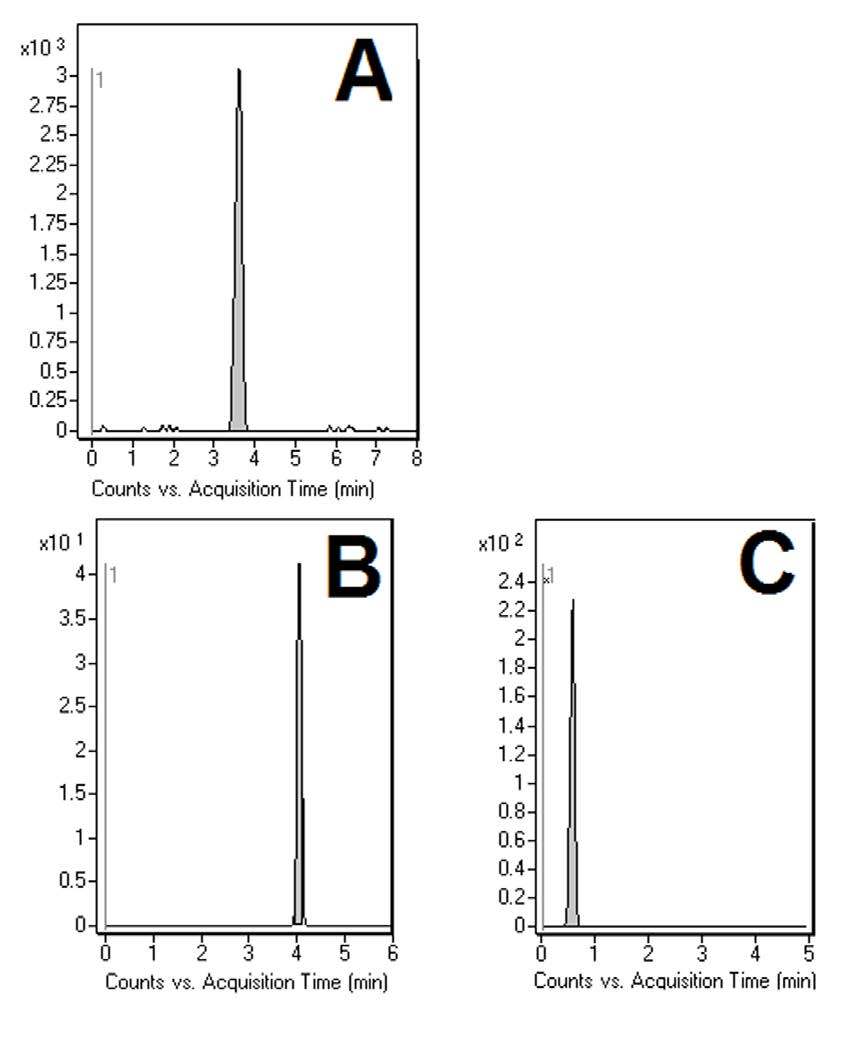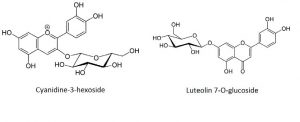Cyanidine-3-Hexoside, Luteolin 7-O-Glucoside & Malvidin Dihexoside
Click HERE for Column Ordering Information.
Observed in Mesquite Flour extracts, these compounds are Glycosidic Flavones and Anthocyanins. The Glycoside Moieties impart polar characteristics to the analytes, which makes them amenable to Retention by the Aqueous Normal Phase (ANP).
In this Application Note, the Cogent Phenyl Hydride Column was used to obtain Chromatographic Separation. The same column can be used in the Reversed Phase mode as well, highlighting its versatility in the analysis of both hydrophilic and hydrophobic compounds.


Peaks:
A. Cyanidine-3-Hexoside (m/z = 450.116 [M + H]+)
B. Luteolin 7-O-Glucoside (m/z = 331.082 [M + H]+)
C. Malvidin Dihexoside (m/z = 449.108 [M + H]+)
Method Conditions:
Column: Cogent Phenyl Hydride™ , 4um, 100A
Catalog No.: 69020-05P-2
Dimensions: 2.1 x 50 mm
Solvents:
—A: DI Water / 0.1% Formic Acid (v/v)
—B: Acetonitrile / 0.1% Formic Acid (v/v)
Gradient:
| Time (Minutes) | %B |
| 0 | 90 |
| 10 | 50 |
| 12 | 50 |
| 18 | 20 |
| 20 | 20 |
| 21 | 90 |
Injection Volume: 1µL
Flow Rate: 0.4mL / minute
Detection: ESI – POS – Agilent 6210 MSD TOF Mass Spectrometer
Sample Preparation: Mesquite flour extracted in DI Water and 70:10 Methanol / DI Water. Extracts were centrifuged and the supernatant was collected.
Note: Mesquite Flour may have several advantages over wheat-based Flour for certain types of people. Firstly, it is gluten-free, which may be pertinent to those with celiac disease or gluten sensitivity. For diabetics, its low Glycemic index makes it a good source of Carbohydrates that that can help keep blood sugar levels stable. It is also high in protein and dietary fiber.
Attachment
No 370 Glycosidic Constituents of Mesquite Flour.pdf 0.2 Mb Download File


